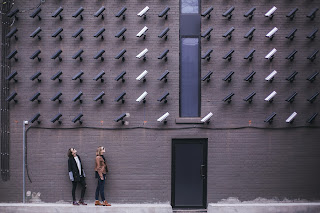- Object detection and tracking: AI algorithms can analyze video footage from CCTV cameras to detect and track objects of interest such as vehicles, people, or specific objects. This enables real-time monitoring and alerts for potential security threats or suspicious activities.
- Facial recognition: AI-powered facial recognition algorithms can identify and match faces against watchlists or databases. This technology is useful for enhancing security by identifying known individuals, tracking persons of interest, or detecting unauthorized access.
- Behavior analysis: AI algorithms can learn and recognize patterns of behavior, such as loitering, crowd formation, or abnormal movements. This allows CCTV systems to automatically identify and flag unusual activities for further investigation.
- Anomaly detection: By training AI models on normal behavior patterns, CCTV systems can identify and highlight abnormal events or activities. For example, if a person suddenly starts running in a restricted area, the AI system can raise an alert for security personnel to respond.
- Automated alerts and notifications: AI-powered CCTV systems can automatically generate alerts or notifications based on predefined rules or triggers. These alerts can be sent to security personnel or relevant authorities, ensuring timely response to potential security incidents.
- Smart video analytics: AI algorithms can analyze video content to extract useful information. For instance, they can count the number of people in a specific area, estimate crowd density, detect abandoned objects, or identify traffic flow patterns. These analytics provide valuable insights for security management, crowd control, or urban planning.
- Predictive analytics: By analyzing historical data and combining it with real-time information, AI algorithms can make predictions about potential security threats or incidents. This helps in proactive security management and resource allocation.
- Post-event analysis: AI algorithms can assist in post-event analysis by quickly reviewing and indexing vast amounts of video footage. This enables investigators to search for specific objects, persons, or events, saving time and effort in manual review.
While AI brings many benefits to CCTV surveillance systems, there are also concerns regarding privacy, data security, and potential biases that need to be taken into account. It is crucial to always observe proper implementation and adherence to ethical guidelines to ensure the responsible and effective use of AI in CCTV.



